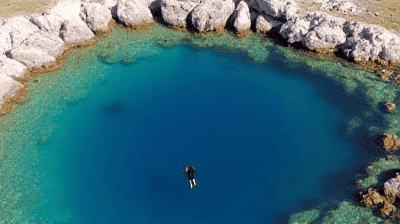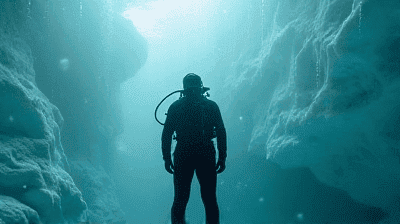Exploring WWII Wrecks at 200ft: The Dangers of Deep Wreck Penetration

Diving into the depths of the ocean to explore World War II wrecks has become an increasingly popular pursuit among seasoned divers and history enthusiasts. These submerged relics tell powerful stories of bravery, sacrifice, and the tumultuous events of the past. However, deep wreck penetration, especially at depths of 200 feet, presents numerous challenges and dangers that can put divers at risk.
The Fascination with WWII Wrecks
Historical Significance
World War II was one of the most impactful events in history, leading to significant changes in countless lives and international relations. The war left a legacy of battleships, aircraft, submarines, and other vessels resting on the ocean floor. These wrecks serve as time capsules, preserving fragments of history and offering valuable insights into the wartime experience.
Memorials to Fallen Soldiers: Many divers view WWII wrecks as memorials to those who lost their lives during the war. Exploring these sites can evoke a profound sense of respect and appreciation for the sacrifices made.
Insights into Technology: The wrecks provide a glimpse into the maritime technology of the era, allowing divers to observe and study the engineering marvels that once roamed the seas.
Biological Havens: Wrecks often become artificial reefs, attracting diverse marine life. This transformation creates an exciting opportunity for divers to witness the interplay between history and nature.
Popular Wrecks to Explore
Several notable WWII wrecks have become popular destinations for divers seeking to explore the past:
USS Arizona (Pearl Harbor, Hawaii): This iconic battleship sunk during the attack on Pearl Harbor remains a somber memorial and a fascinating dive site.
HMHS Britannic (Kehl Kosin, Greece): The sister ship of the Titanic, Britannic sank during World War I and is now a sought-after wreck for divers interested in maritime history.
U-Boat Wrecks (Various Locations): German U-Boats, some of which sank during WWII, provide thrilling exploration opportunities for divers looking to navigate the remnants of naval warfare.
Understanding Deep Wreck Penetration

What is Deep Wreck Penetration?
Deep wreck penetration refers to the practice of entering the interior of a sunken vessel at significant depths. While the outer structure of the wreck may be accessible, the inside often holds additional challenges:
Limited Visibility: Inside wrecks, divers can encounter darkness, debris, and narrow passageways that restrict visibility and complicate navigation.
Hazardous Conditions: Broken machinery, sharp edges, and shifting structures inside a wreck make for potentially unsafe environments.
Risk of Disorientation: Navigating the complex layout of a wreck can be disorienting, particularly for divers who are not experienced in wreck exploration.
Equipment Required for Deep Wreck Diving
Diving into a WWII wreck at 200 feet demands specialized equipment to ensure safety and enhance the diving experience. Key components include:
Advanced Dive Gear: Divers should use high-quality drysuits or wetsuits, as temperatures can be much colder at depth. Dry gloves and hoods can also provide additional protection against the cold.
Regulators and Tanks: The use of reliable, cold-water regulators and high-capacity tanks is essential. Many experienced divers opt for twin tanks or rebreathers to ensure a continuous air supply during extended explorations.
Lighting Systems: High-intensity dive lights are crucial for illuminating dark areas inside wrecks and navigating through tight spaces.
Safety Equipment: Divers should carry safety reels, markers, cutting tools, and backup gear, including additional lights and air sources.
Communication Devices: While underwater, maintaining communication with dive partners is critical. Divers should use waterproof signaling devices or communication systems when navigating deep wrecks.
The Dangers of Deep Wreck Penetration
Physiological Challenges
Venturing to depths of 200 feet poses unique physiological challenges for divers:
Increased Nitrogen Absorption: As divers descend, they absorb nitrogen at higher rates, increasing the risk of nitrogen narcosis, which can impair judgment and coordination.
Decompression Sickness: Ascending too quickly after deep dives can lead to decompression sickness, a potentially life-threatening condition caused by nitrogen bubbles forming in the bloodstream.
Thermal Stress: Cold water temperatures at significant depths can lead to hypothermia if divers are not adequately protected, impacting physical and cognitive functions.
Risks Associated with Wreck Penetration
While wreck diving offers thrilling exploration, it also comes with specific dangers that require caution and respect:
Entrapment: Navigating the tight and unpredictable spaces within a wreck increases the risk of becoming trapped. This possibility heightens the need for teamwork and thorough planning.
Debris and Hazards: The interior of wrecks can be filled with debris, sharp objects, and unstable structures. Divers need to remain vigilant and aware of their surroundings to avoid injuries.
Complex Navigation: The layout of wrecks can be intricate, making it challenging to navigate and retrace steps. Disorientation can quickly become a life-threatening issue.
Air Supply Management: The deeper divers go, the more critical air supply management becomes.Competent divers must continuously monitor air consumption rates to ensure they have sufficient air.
Preparation for Deep Wreck Diving

Training and Certification
Given the risks of deep wreck penetration, aspiring divers must undergo comprehensive training and obtain appropriate certifications:
Technical Diving Courses: Divers should seek out technical diving courses that focus on deep diving and wreck exploration. These courses cover essential skills, safety procedures, and emergency management.
Wreck Diving Specialization: Specialized wreck diving training can help divers gain the knowledge and skills required to explore complex wrecks safely.
Continuous Education: Even experienced divers should engage in ongoing education to update skills, learn new techniques, and stay informed about the latest equipment and practices.
Dive Planning and Coordination
Effective planning is vital for successful and safe deep wreck dives. Key components of dive planning include:
Team Briefings: Conduct thorough team briefings before each dive to establish rules, roles, and communication strategies.
Site Reconnaissance: If possible, conduct a reconnaissance mission to assess the dive site and familiarize the team with potential hazards and entry/exit points.
Emergency Protocols: Establish clear emergency protocols for various scenarios, including equipment failure, disorientation, and entrapment situations.
Equipment Checks
Before entering the water, divers should conduct thorough gear checks to ensure everything is functioning correctly. This includes:
Regulator Tests: Inspect and test regulators, ensuring they deliver air properly and are functioning without fault.
Light Functionality: Verify that dive lights are fully charged and functioning, including backup lights.
Air Supply Assessment: Check the air levels in tanks and ensure that all divers have sufficient air for the dive, including decompression requirements.
Experiences from the Field
Personal Accounts from Deep Wreck Divers
To better understand the thrills and challenges of deep wreck penetration, we will share personal experiences from seasoned divers who have explored WWII wrecks:
The Thrill of Exploration: One diver recounted their first deep wreck penetration experience inside a sunken battleship. The excitement of exploring the dark corridors with only lights illuminating the path was unforgettable.
Facing Fear: Another diver described a moment of panic when they became disoriented inside a wreck. Remaining calm and relying on dive buddies were crucial steps in safely retracing their route.
Respecting History: Divers often emphasize the importance of treating wrecks with respect. They feel privileged to explore these sites and are committed to preserving their integrity for future generations.
The Importance of Safety in Wreck Diving

Emphasizing Safety Protocols
Safety must always be the top priority when engaging in deep wreck diving. Divers should adhere to established safety protocols and best practices:
Buddy System: Always dive with a buddy. Mutual support and communication enhance safety, particularly in challenging environments.
Gas Management: Monitor gas supplies during the dive, adjusting plans as needed to ensure a safe ascent and return to the surface.
Controlled Ascent: Ensure a slow and controlled ascent, allowing enough time for safe decompression and reducing the risk of injury.
Post-Dive Reflection: After each dive, engage in a debriefing session to discuss what went well, areas for improvement, and lessons learned for future dives.
Equipment Maintenance
Proper equipment maintenance is critical for successful and safe deep wreck exploration:
Regular Checks and Servicing: Dive gear should be regularly checked and serviced by professionals to ensure it is functioning correctly.
Storing Equipment Properly: Proper storage of dive gear protects it from damage, malfunction, and exposure to corrosive elements.
Supplemental Gear: Divers should carry supplemental equipment, including dive knives, surface markers, and signaling devices, to enhance safety.
Conclusion
Exploring WWII wrecks at depths of 200 feet is an incredibly rewarding yet dangerous pursuit. The beauty of the underwater world combined with the historical significance of these wrecks captivates divers and history enthusiasts alike. However, deep wreck penetration comes with risks that require thorough preparation, specialized training, and unwavering respect for safety protocols.
By embracing a comprehensive approach to dive planning, execution, and reflection, divers can explore these underwater time capsules while mitigating potential hazards. The stories of those who venture into the depths serve as powerful reminders of the sacrifices made during the war and the importance of preserving history through responsible diving practices.
As the fascination with deep wreck diving continues to grow, understanding the associated risks and preparing adequately will ensure that the thrill of discovery remains a safe and enriching experience for generations of divers to come.


